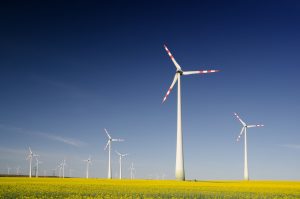
Content provided by media
According to energy experts, heating and cooling account for 47% of the energy used in the home. Historically, much of this energy was produced by coal. But if current energy trends are any indication, the future of heating and cooling will become more dependent upon renewable energy sources.
This past April, renewable energy in the United States generated more electricity than coal. The same trend is expected to continue through May and on and off throughout the rest of 2019 and into 2020. This includes green energy sources like solar, wind, geothermal, and hydro. This should not be a big surprise considering that Americans are not as dependent on their heating and cooling systems during the spring. Spring is also a time when most coal plants go offline in order to receive repairs and maintenance.
In the meantime, while increased renewable energy use appears to be a huge win for environmentalists and green power producers, the Federal Energy Information Administration states that it won’t last over the summer. When it comes to home energy use, the average central air conditioning unit uses up to 5,000 watts of power every hour during the hottest months of the year, which means as soon as Americans power up their air conditioners, renewable energy will once again take a backseat to coal—but as green energy sources continue to grow, that trend may not continue forever.
Administration states that it won’t last over the summer. When it comes to home energy use, the average central air conditioning unit uses up to 5,000 watts of power every hour during the hottest months of the year, which means as soon as Americans power up their air conditioners, renewable energy will once again take a backseat to coal—but as green energy sources continue to grow, that trend may not continue forever.
The Transition from Coal to Renewable Energy
Despite the fact that it will take years before renewable energy use surpasses coal, green power producers are seeing a welcome transition in the country’s electric sector. According to Dennis Wamsted of the Institute for Energy Economics and Financial Analysis (IEEFA), it’s a change that wasn’t even close to happening just five years ago. Part of the reason for the increase in the use of renewable energy is that coal has been in a steady decline in the last 10 years, with electricity from natural gas exceeding coal in 2015. Today, natural gas produces 35% of the electricity in the United States, compared to 27% produced by coal.
The decline of energy produced from coal is taking place in one of the least expected states in the country: Texas. In the first quarter of 2019, electricity produced by wind and solar power exceeded that of coal and will most likely continue to do so as the state of Texas currently has over 300 renewable energy projects in the works. Other states like California and Hawaii are also investing in renewable energy and have announced carbon-free energy plans. These factors, along with the arrival of inexpensive lithium-ion batteries that allow users to store wind and solar power, make the renewable energy market more competitive than ever.
The decline of energy produced from coal is taking place in one of the least expected states in the country: Texas. In the first quarter of 2019, electricity produced by wind and solar power exceeded that of coal and will most likely continue to do so as the state of Texas currently has over 300 renewable energy projects in the works. Other states like California and Hawaii are also investing in renewable energy and have announced carbon-free energy plans. These factors, along with the arrival of inexpensive lithium-ion batteries that allow users to store wind and solar power, make the renewable energy market more competitive than ever.
Slowly but surely, green energy is making up more of the electric sector in the country, and at a much faster rate than initially projected. Despite the trend, however, the country’s carbon footprint increased by 3.4 percent in 2018, with the transportation sector contributing the largest amounts of carbon emissions. Airplanes, semi-trucks, and automobiles led the way for the highest number of carbon emissions, meaning that a green energy revolution couldn’t be more necessary.








